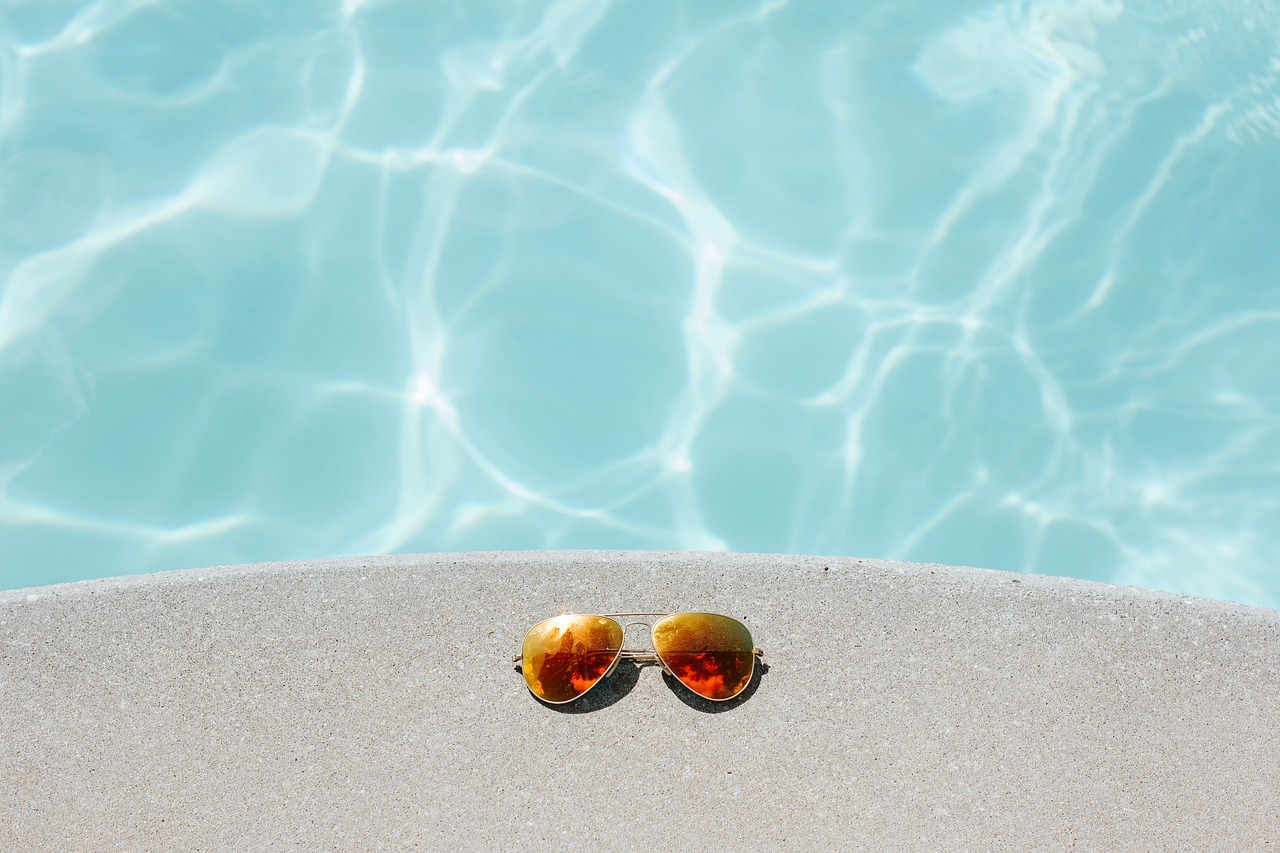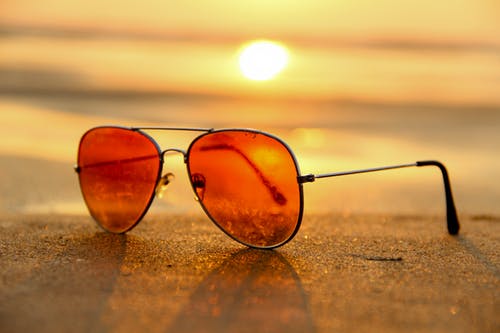Sunglasses are an essential part of your beach gear, but it’s not just because they look cool. These dark lenses and sturdy frames are actually important for blocking out the harmful rays from your eyes when you’re out in the sun. There are UVA, UVB, and UVC rays out there, all of which could harm your eyes if you’re not careful.
Plus, sunglasses serve to prevent any dust, debris, or other foreign matter from entering your eyes. They’re hence needed not just for the beach, but also outdoor activities such as driving, skiing, snowboarding, cycling, hiking, etc.
Many of us may assume that sunglasses are a somewhat recent innovation, but that’s far from the truth. In fact, there’s evidence that sunglasses might even have been in use during the prehistoric era. Below, we’ll take a look at the history of sunglasses so we may understand their importance better:
Ancient Uses
There are several pieces of evidence which suggest the use of sunglasses in early human history. Inuit people in the prehistoric era used to flatten ivory pieces for putting into glasses. These were then used to block any reflective sun rays which could cause eye damage. Some may now call these snow goggles.
There’s even earlier historical evidence which shows us the use of sunglasses in ancient Roman and Chinese civilizations. The Roman emperor Nero used to view the gladiator fights through spectacles with lenses made of polished gems.
Chinese Use
The Chinese also made their own use of sunglasses dating back to at least the 12th century. These consisted of quartz lenses. These weren’t designed for vision correction or protection from ultraviolet rays. However, they were useful in cutting out the glare from their eyes. There are even some sources which suggest that judges wore eyeglasses in order to mask their facial expressions during interrogations.
Mid-18th Century
The mid-18th century in England saw experimentation using tinted lenses. This was by JamesAyscough, an English optician. He held the belief that tinted lenses might be the answer to correcting impairments in vision. The issue of damaging rays for the sun wasn’t considered a danger at the time, hence there was being no work to this effect. However, Ayscough did succeed in making glasses with blue and green-tinted lenses.
Eyeglasses with yellow lenses were hence prescribed for syphilis patients for the most part. This disease caused eye sensitivity, and the sunglasses helped to mitigate this symptom. However, the devices weren’t actually called ‘sunglasses’ just yet.
Early 20th Century
At this point in time, sunglasses gradually became quite popular. Hollywood celebrities usually wore them for several reasons. Some still think that this was in order to disguise their identity or evade their fans. However, the main reason was probably to avoid eye irritation by the arc lamps at film sets or studios. Even when the lighting technology advanced, celebrities still wore sunglasses. Eventually, these became more of a fashion accessory for them.
Mass Production
The mass production of sunglasses was started in 1929 by Sam Foster. These were made of celluloid and mostly sold on Atlantic City beaches in New Jersey. The name of the company that manufactured and sold the sunglasses was Foster Grant.
The sales increased rapidly, with around 20 million pairs being sold by the mid 1930sw within the United States alone. Only around a quarter of the buyers used the sunglasses for eye protection, though. The usual attitude was that sunglasses were a fashion accessory and cut off the glare from the sun.
Edwin H. Land, the inventor of the Polaroid, started experimenting with a filter on sunglasses lenses by 1937. This resulted in polarized sunglasses, which cut out every bit of excess light. These were first manufactured by Bausch & Lomb for the use of airplane pilots, hence resulting in aviator sunglasses. Ray-Ban is now known for these kinds of sunglasses, though they are offered by other brands as well.
Quality Improvement
As technology advances, the functions and features of sunglasses are only getting better. Now, we may reasonably expect complete UV protection in almost every pair we buy, as this is the industry standard. We can also get sunglasses with several tints, frame designs, and materials according to our needs. For instance, tennis players may prefer sunglasses with green tints in order to see the ball better.
Lens Tints
The usual tint for sunglasses is gray, which is good enough for general use. Blue tints are good for fishermen, as they neutralize the blue of the water. There are also darker and lighter tints for those who have to be outdoors most of the time. If you have to be outside in the early morning or in lowlight conditions, a lighter tint is best for visibility. Darker tints are best for brighter times such as midday.
Materials
The material for sunglasses may vary between polycarbonate, glass, metal alloys, plastic, etc. There could be different materials for the frames and the lenses, so we should pick and choose according to our requirements. Glass lenses are the oldest kind that still provides polarization features. However, these are prone to breaking, even though they do offer the clearest vision.
The most common offering for lenses these days is polycarbonate. While it’s more durable than glass, it’s usually prone to scratches and doesn’t provide the same clarity of vision. There are now efforts towards producing newer and better materials for such lenses, such as nylon or CR-39. These are thin enough to provide a lightweight option and can also have shatterproof plus impact-proof features.
Oversized Sunglasses
Many celebrities and athletes are now wearing oversized sunglasses from designer brands. This is to protect the eyes from all sorts of glares, whether they’re from the sun or cameras. Of course, these are also known as fashion accessories that exude a sense of the aloof celebrity. There are other sunglasses shapes that are growing more popular, such as square-shaped lenses or the cats’ eye design.
Conclusion
There’s no doubt that sunglasses are necessary for preserving our eyes and enhancing our vision in the sun. Even when you’re driving at night or playing a sport under bright lights, sunglasses are necessary for the best vision and hence performance. While recent inventions may have made sunglasses more effective and long-lasting, the concept itself has been around for a long time. This partly proves how useful they are, so we should get a decent pair for ourselves as soon as possible.


